Abstract
Samples of raw sewage, primary effluent, and secondary effluent from a large activated-sludge purification plant near Melbourne (Victoria, Australia) were collected every second week for 1 year. Viruses were detected in all secondary effluent samples and in six of seven samples obtained after final chlorination. Adenoviruses (85% reduction) and reoviruses (28% reduction) were removed less efficiently by this treatment process than were enteroviruses (93% reduction). In addition, 57 of 171 samples of effluent tested were positive for either adenoviruses or reoviruses, or both, when enteroviruses were not isolated. This clearly shows that the use of enteroviruses as sole indicators of viruses in water may miss up to one-third of instances of viral contamination. Enteroviruses and adenoviruses were isolated most frequently in HeLa-R cell cultures, whereas reoviruses were most often isolated in primary monkey kidney cells.
Full text
PDF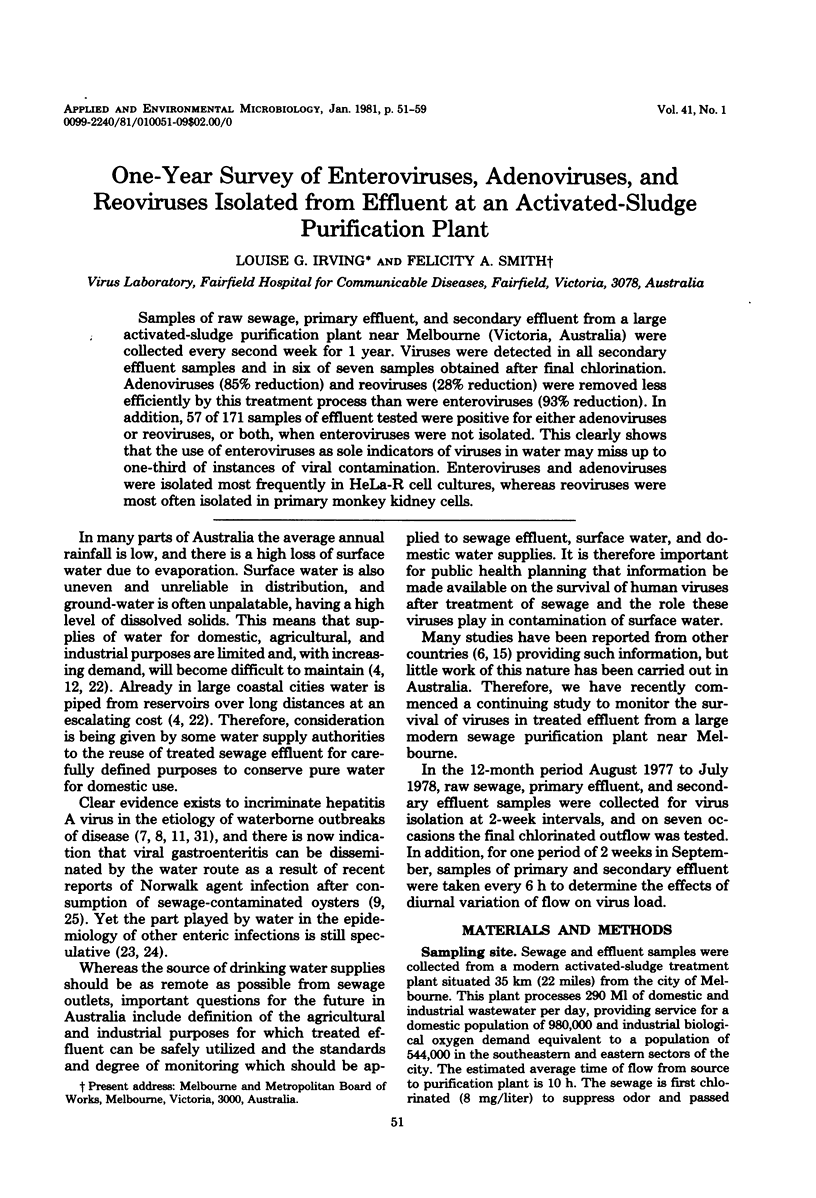
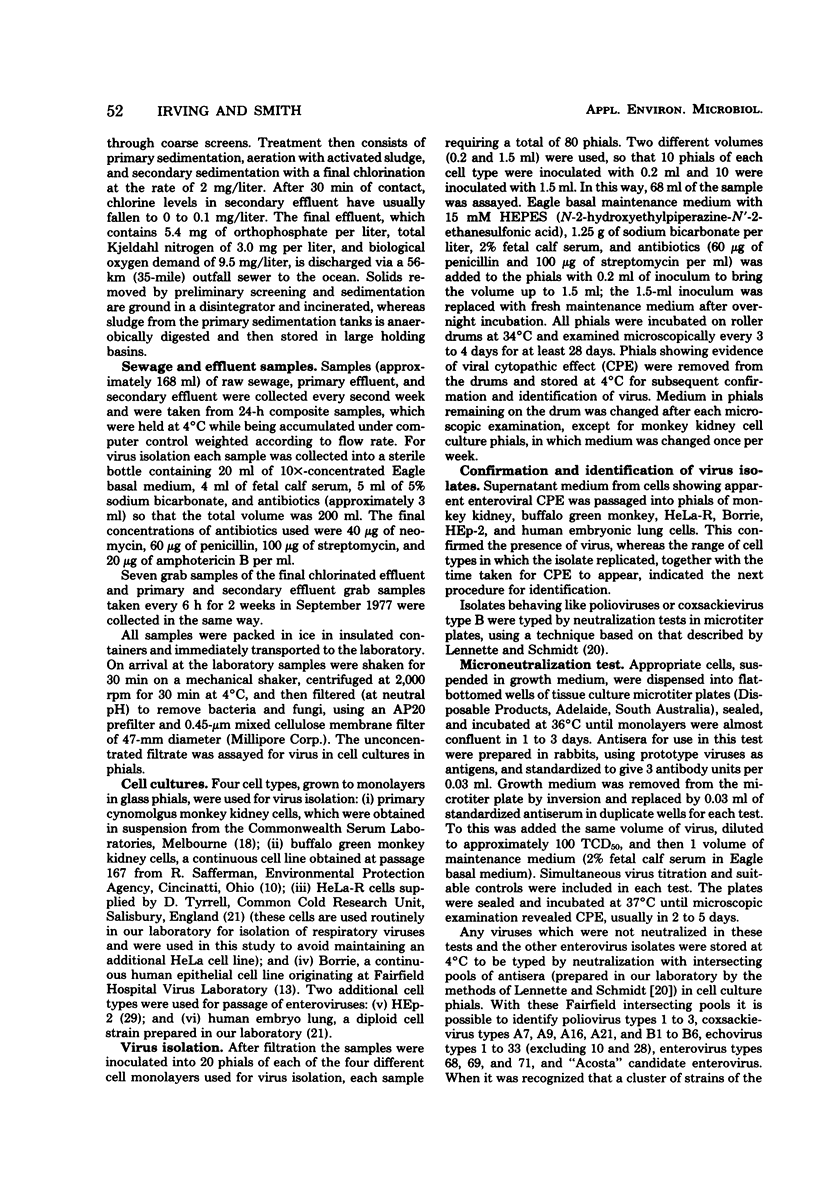

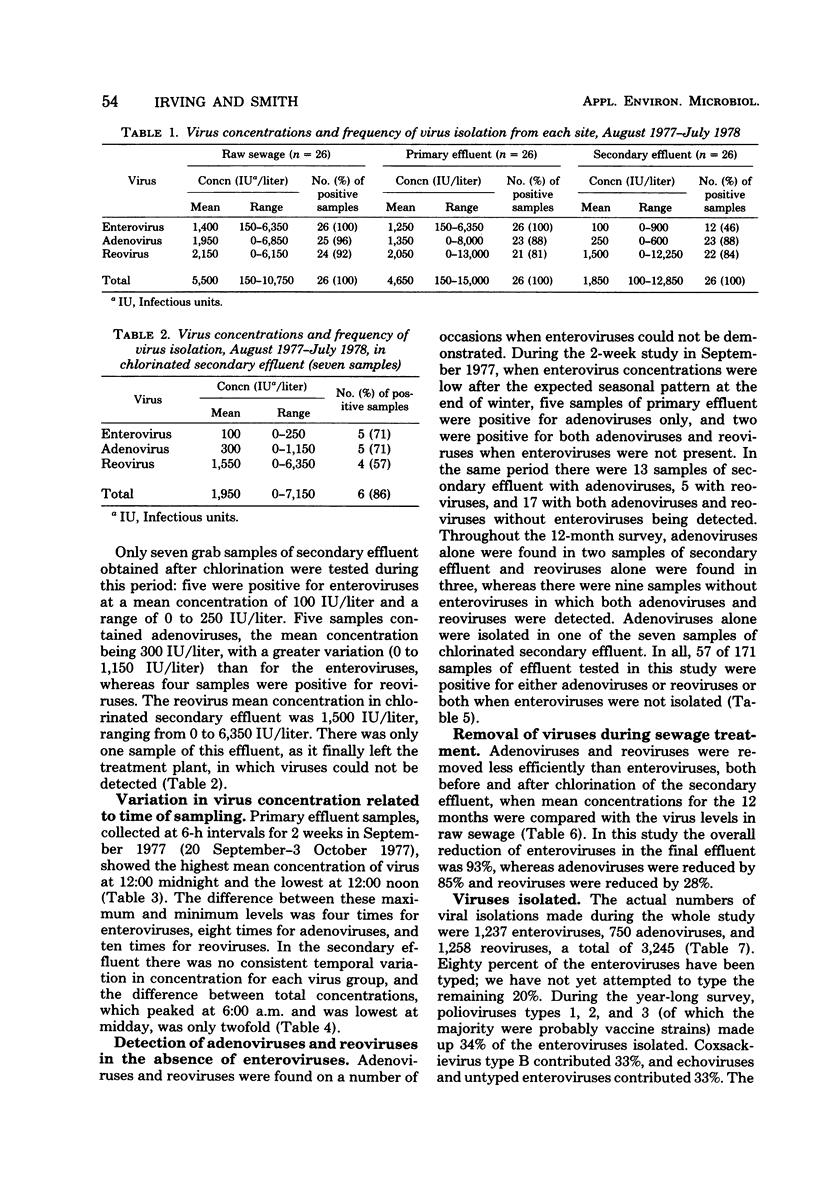


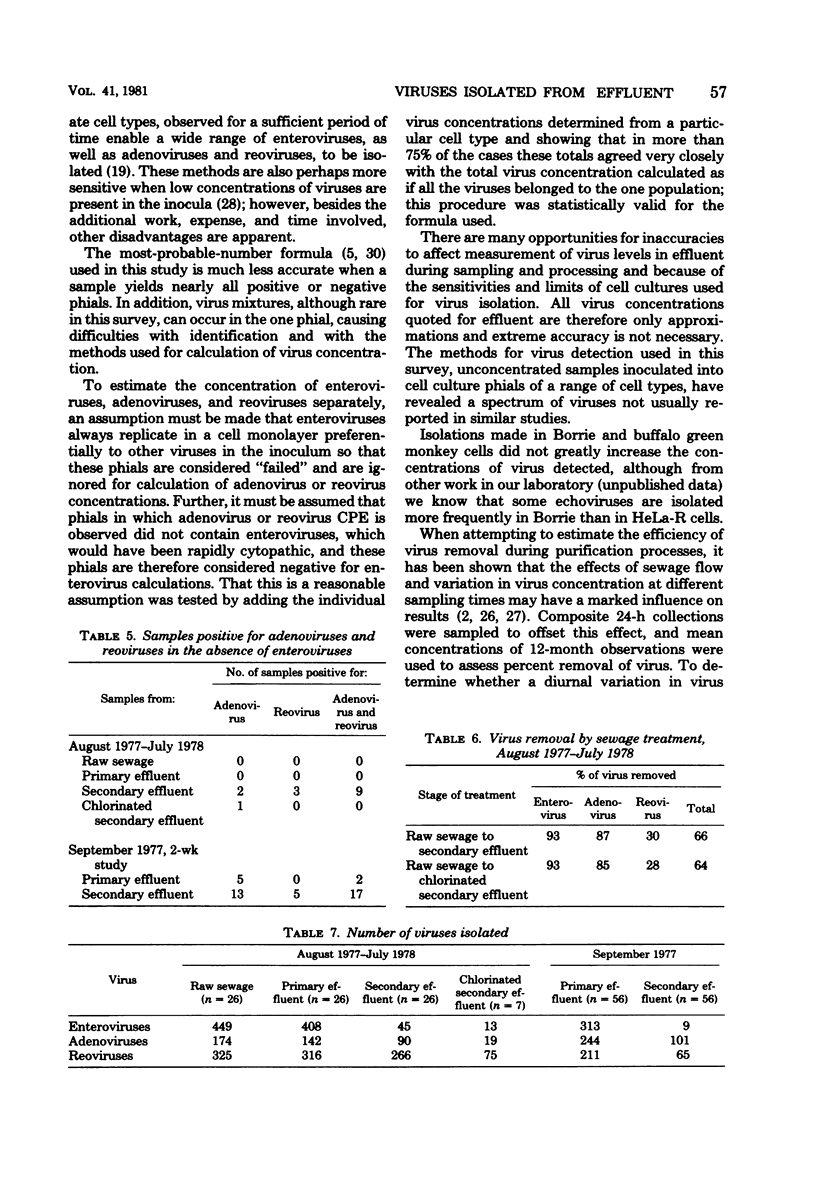

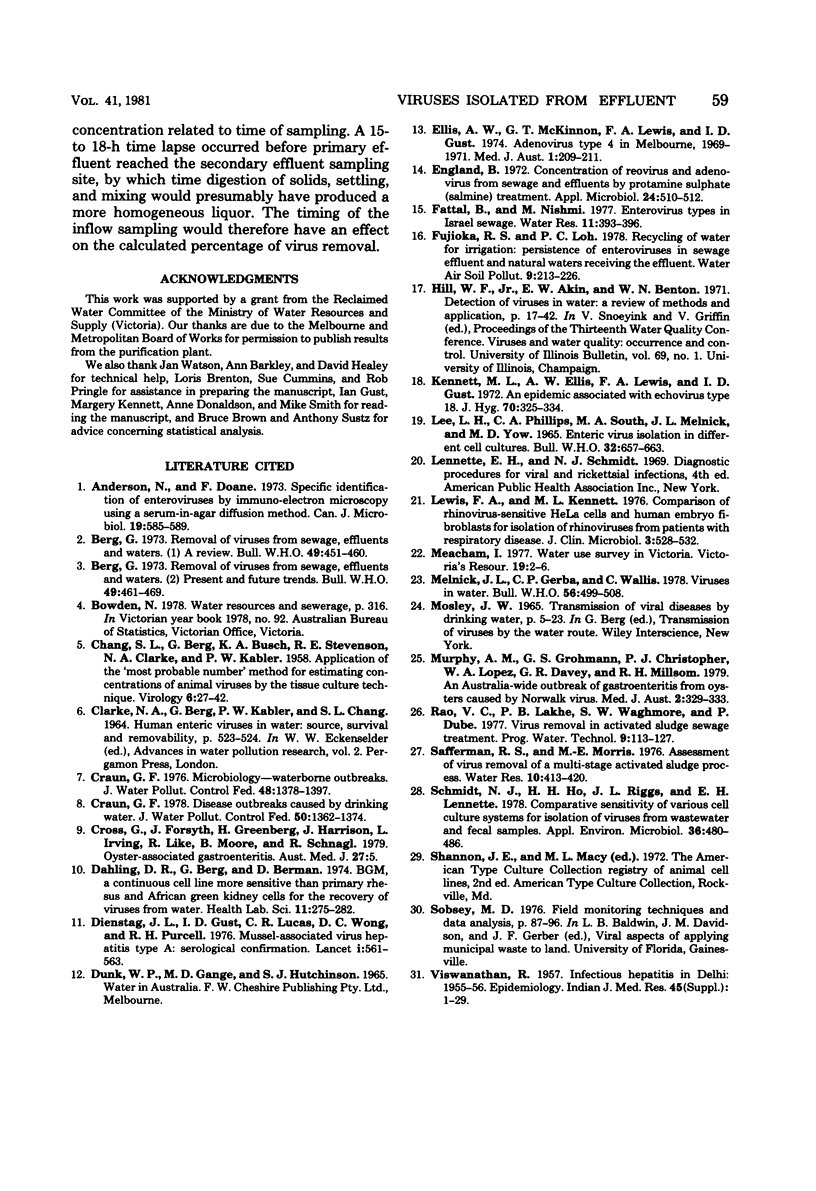
Selected References
These references are in PubMed. This may not be the complete list of references from this article.
- Anderson N., Doane F. W. Specific identification of enteroviruses by immuno-electron microscopy using a serum-in-agar diffusion method. Can J Microbiol. 1973 May;19(5):585–589. doi: 10.1139/m73-096. [DOI] [PubMed] [Google Scholar]
- Berg G. Removal of viruses from sewage, effluents and waters. 2. Present and future trends. Bull World Health Organ. 1973;49(5):461–469. [PMC free article] [PubMed] [Google Scholar]
- Berg G. Removal of viruses from sewage, effluents, and waters. I. A review. Bull World Health Organ. 1973;49(5):451–460. [PMC free article] [PubMed] [Google Scholar]
- CHANG S. L., BERG G., BUSCH K. A., STEVENSON R. E., CLARKE N. A., KABLER P. W. Application of the most probable number method for estimating concentrations of animal viruses by the tissue culture technique. Virology. 1958 Aug;6(1):27–42. doi: 10.1016/0042-6822(58)90057-6. [DOI] [PubMed] [Google Scholar]
- Craun G. F. Microbiology--waterborne outbreaks. J Water Pollut Control Fed. 1976 Jun;48(6):1378–1397. [PubMed] [Google Scholar]
- Dahling D. R., Berg G., Berman D. BGM, a continuous cell line more sensitive than primary rhesus and African green kidney cells for the recovery of viruses from water. Health Lab Sci. 1974 Oct;11(4):275–282. [PubMed] [Google Scholar]
- Dienstag J. L., Gust I. D., Lucas C. R., Wong D. C., Purcell R. H. Mussel-associated viral hepatitis, type A: serological confirmation. Lancet. 1976 Mar 13;1(7959):561–563. doi: 10.1016/s0140-6736(76)90358-5. [DOI] [PubMed] [Google Scholar]
- Ellis A. W., McKinnon G. T., Lewis F. A., Gust I. D. Adenovirus type 4 in Melbourne, 1969-1971. Med J Aust. 1974 Feb 16;1(7):209–211. doi: 10.5694/j.1326-5377.1974.tb93113.x. [DOI] [PubMed] [Google Scholar]
- England B. Concentration of reovirus and adenovirus from sewage and effluents by protamine sulfate (salmine) treatment. Appl Microbiol. 1972 Sep;24(3):510–512. doi: 10.1128/am.24.3.510-512.1972. [DOI] [PMC free article] [PubMed] [Google Scholar]
- Kennett M. L., Ellis A. W., Lewis F. A., Gust I. D. An epidemic associated with echovirus type 18. J Hyg (Lond) 1972 Jun;70(2):325–334. doi: 10.1017/s0022172400022373. [DOI] [PMC free article] [PubMed] [Google Scholar]
- Lee L. H., Phillips C. A., South M. A., Melnick J. L., Yow M. D. Enteric virus isolation in different cell cultures. Bull World Health Organ. 1965;32(5):657–663. [PMC free article] [PubMed] [Google Scholar]
- Lewis F. A., Kennett M. L. Comparison of rhinovirus-sensitive HeLa cells and human embryo fibroblasts for isolation of rhinoviruses from patients with respiratory disease. J Clin Microbiol. 1976 May;3(5):528–532. doi: 10.1128/jcm.3.5.528-532.1976. [DOI] [PMC free article] [PubMed] [Google Scholar]
- Melnick J. L., Gerba C. P., Wallis C. Viruses in water. Bull World Health Organ. 1978;56(4):499–508. [PMC free article] [PubMed] [Google Scholar]
- Murphy A. M., Grohmann G. S., Christopher P. J., Lopez W. A., Davey G. R., Millsom R. H. An Australia-wide outbreak of gastroenteritis from oysters caused by Norwalk virus. Med J Aust. 1979 Oct 6;2(7):329–333. doi: 10.5694/j.1326-5377.1979.tb104133.x. [DOI] [PubMed] [Google Scholar]
- Schmidt N. J., Ho H. H., Riggs J. L., Lennette E. H. Comparative sensitivity of various cell culture systems for isolation of viruses from wastewater and fecal samples. Appl Environ Microbiol. 1978 Sep;36(3):480–486. doi: 10.1128/aem.36.3.480-486.1978. [DOI] [PMC free article] [PubMed] [Google Scholar]


